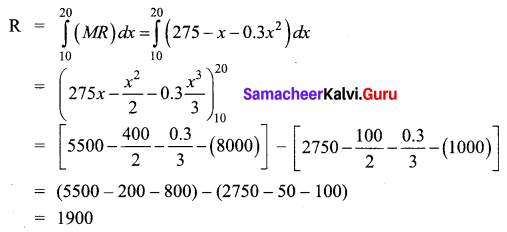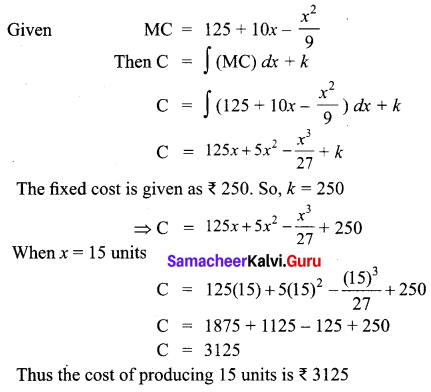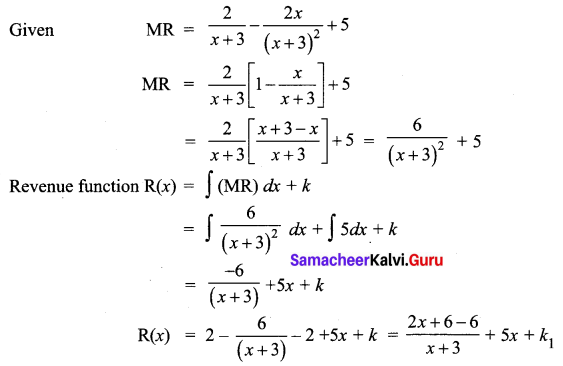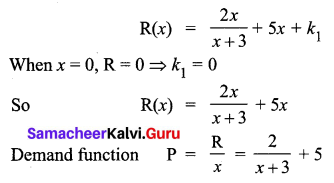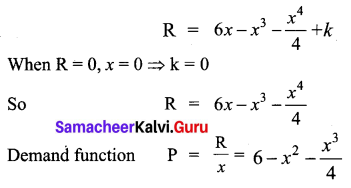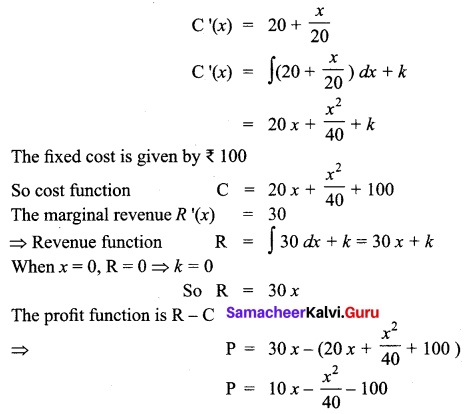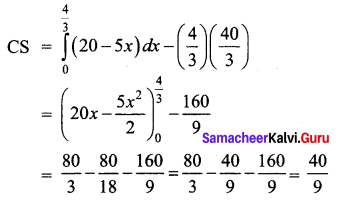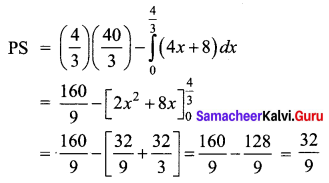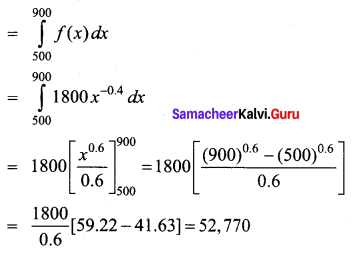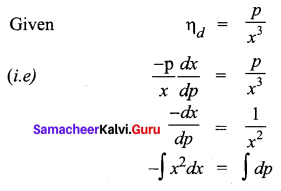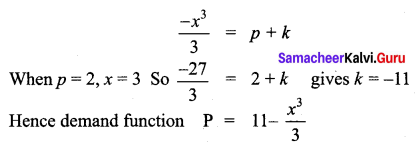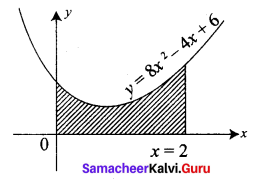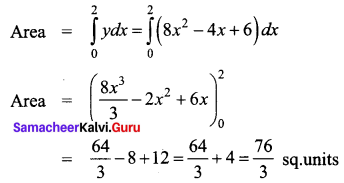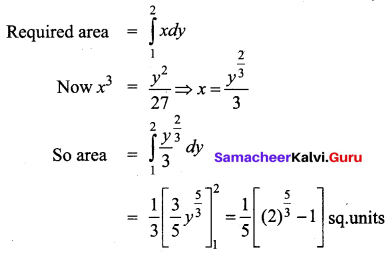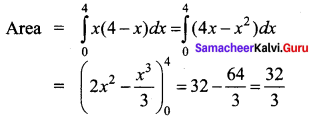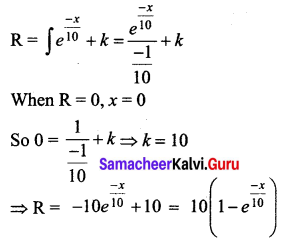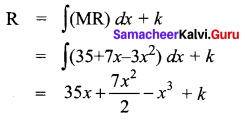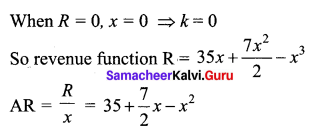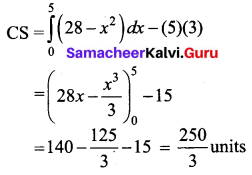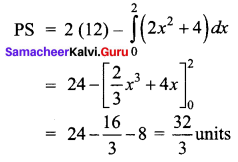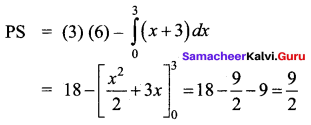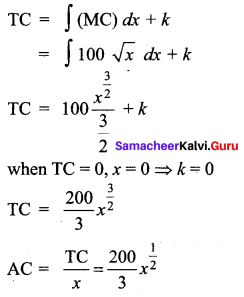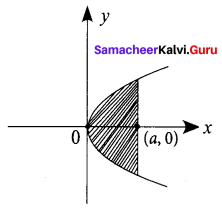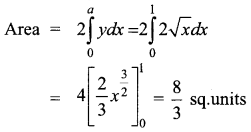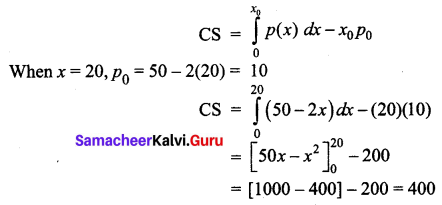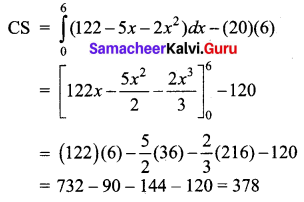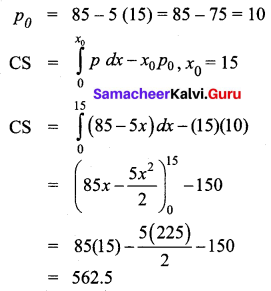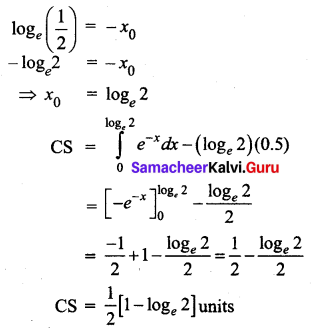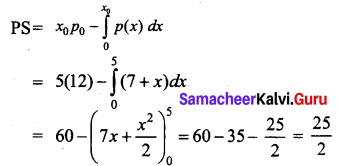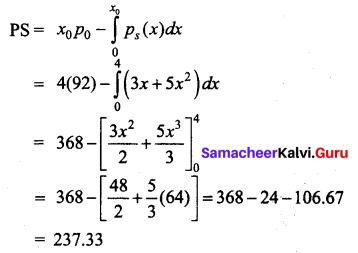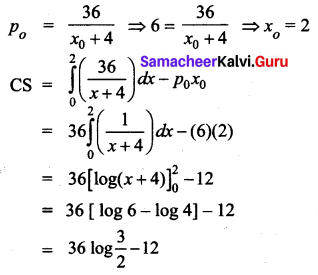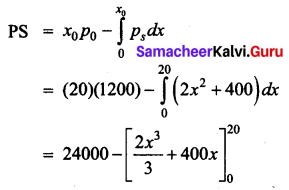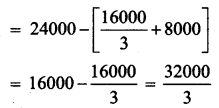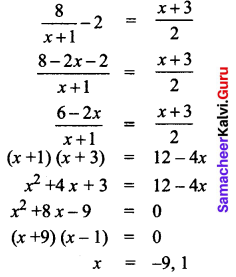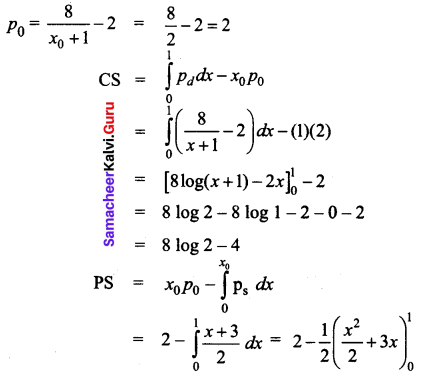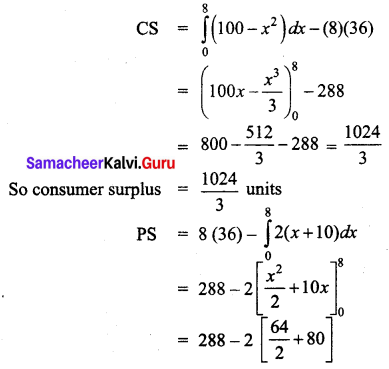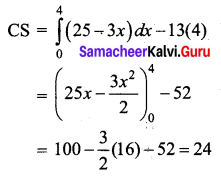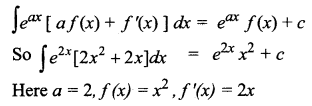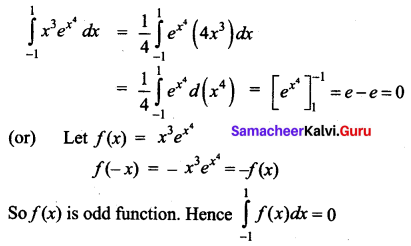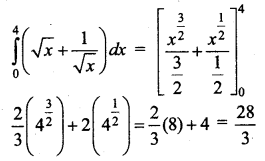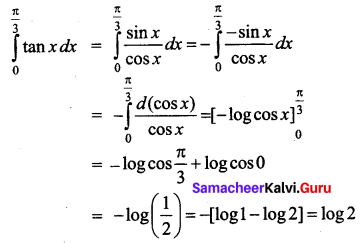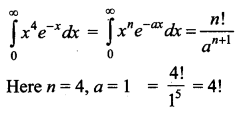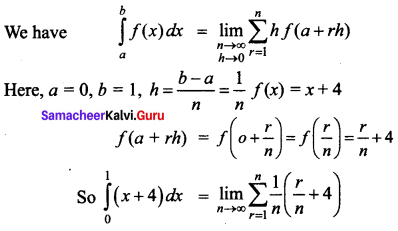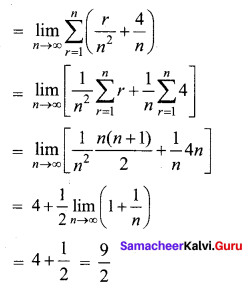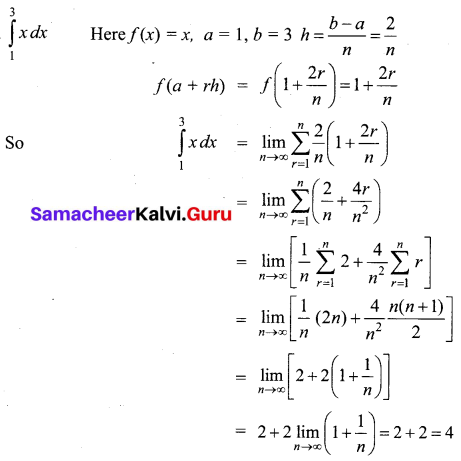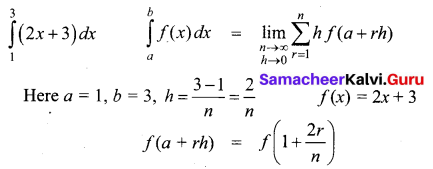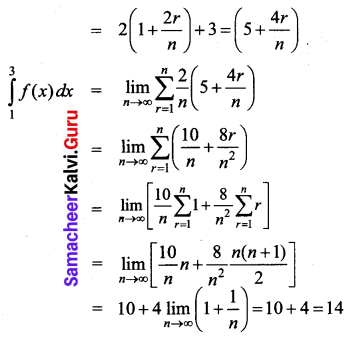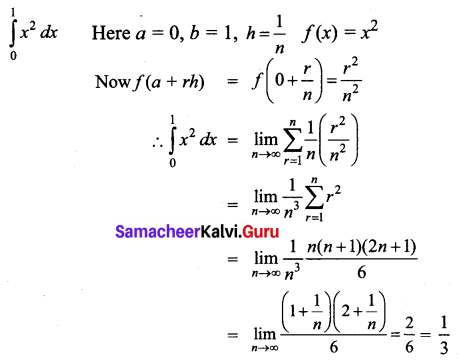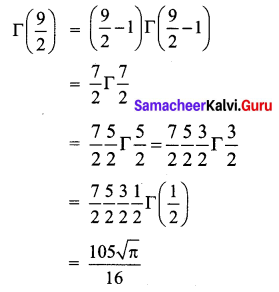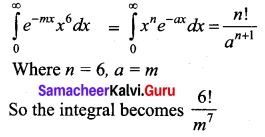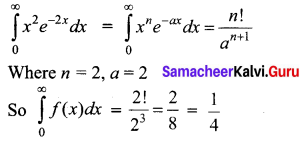Students can Download Tamil Nadu 11th English Model Question Paper 1 Pdf, Tamil Nadu 11th English Model Question Papers helps you to revise the complete Tamilnadu State Board New Syllabus and score more marks in your examinations.
TN State Board 11th English Model Question Paper 1
Instructions:
- The question paper comprises of four parts.
- You are to attempt all the parts. An internal choice of questions is provided wherever applicable.
- questions of Part I, II. III and IV are to be attempted separately
- Question numbers 1 to 20 in Part I are objective type questions of one -mark each. These are to be answered by choosing the most suitable answer from the given four alternatives and writing the option code and the corresponding answer
- Question numbers 21 to 30 in Part II are two-marks questions. These are to be answered in about one or two sentences.
- Question numbers 31 to 40 in Parr III are three-marks questions, These are to be answered in about three to five short sentences.
- Question numbers 41 to 47 in Part IV are five-marks questions. These are to be answered) in detail. Draw diagrams wherever necessary.
Time: 3.00 Hours
Maximum Marks: 90
PART – I
I. Answer all the questions [20 × 1 = 20]
Choose the correct synonym for the underlined words from the options given.
Question 1.
The house was in a dilapidated condition.
(a) decrepit
(b) vigorous
(c) diluted
(d) designated
Answer:
(a) decrepit
Question 2.
The coaches lauded me on the silver.
(a) reproached
(b) rebuked
(c) rescinded
(d) appreciated
Answer:
(d) appreciated
Question 3.
He had to explain the venerable relationship.
(a) disciplined
(b) disreputable
(c) revered
(d) irrelevant
Answer:
(c) revered
![]()
Choose the correct antonym for the underlined words from the options given.
Question 4.
I was peering at an attractive painting.
(a) gorgeous
(b) smart
(c) ugly
(d) beautiful
Answer:
(c) ugly
Question 5.
The villagers were enormously overwhelming.
(a) extremely
(b) awfully
(c) appallingly
(d) insignificantly
Answer:
(d) insignificantly
Question 6.
Each task involved tremendous work and energy.
(a) marvellous
(b) incredible
(c) terrific
(d) meagre
Answer:
(d) meagre
Question 7.
Choose the clipped form of “promenade”.
(a) men
(b) promen
(c) prom
(d) prod
Answer:
(c) prom
Question 8.
Choose the right definition for the given term “graphomania”.
(a) The humanistic study of language and literature
(b) The belief that all events in life are predetermined and inevitable
(c) A passion for writing
(d) A collection of selected literary passages
Answer:
(c) A passion for writing
Question 9.
Choose the meaning of the idiom ‘Last straw’.
(а) Dislike to choose or make a decision
(b) The final problem in a series of problems
(c) The person you are talking about arrives
(d) Take the credit for something you don’t deserve
Answer:
(b) The final problem in a series of problems
![]()
Question 10.
Choose the meaning of the foreign word in the sentence.
My uncle Thomas during our Thanksgiving dinner, did his whole spiel about how the government is controlled by lizard people!
(a) high flown speech to attract people
(b) narration of cooked up jokes
(c) situation where monarchy is felt
(d) detective stories with criminal act.
Answer:
(a) high flown speech to attract people
Question 11.
Choose the word from the options given to form a compound word with “biscuit”.
(a) box
(b) bin
(c) tin
(d) load
Answer:
(c) tin
Question 12.
Form a new word by adding a suitable suffix to the root word, “announce”.
(a) er
(b) ing
(c) ship
(d) ment
Answer:
(d) ment
Question 13.
Choose the expanded form of “ODS”.
(a) Ozone Dialling Services
(b) Organic Deleting Substances
(c) Ozone Depleting Substances
(d) Ozone Dual Secretion
Answer:
(c) Ozone Depleting Substances
Question 14.
Someone who represents a king or queen and rules for him or her in another country.
(a) Chancellor
(b) Viceroy
(c) Dean
(d) Assassin
Answer:
(b) Viceroy
Question 15.
Obsessive passion for balloons and ballooning is known as……….
(a) Eulogomania
(b) Barbarian
(c) Balloonomania
(d) Dromomania
Answer:
(c) Balloonomania
Question 16.
Fill in the blank with the suitable preposition.
The lady has been missing………….last week.
(a) from
(b) since
(c) on
(d) by
Answer:
(b) since
![]()
Question 17.
Add a suitable question tag to the following statement.
Everybody should be given an opportunity,………?
(a) shouldn’t they
(b) won’t they
(c) wouldn’t they
(d) isn’t it
Answer:
(a) shouldn’t they
Question 18.
Substitute the underlined word with the appropriate polite alternative.
You won’t get the contract unless you give the mayor a bribe.
(a) salt
(b) sweetener
(c) sweet box
(d) money
Answer:
(b) sweetener
Question 19.
Substitute the phrasal verb in the sentence with a single word.
The ancestral jewellery has been handed down from generation to generation.
(a) stored
(b) delivered
(c) hidden
(d) distributed
Answer:
(b) delivered
Question 20.
Fill in the blank with a suitable relative pronoun
……….. subject do you like better, Maths or Chemistry?
(a) Which
(b) What
(c) Whose
(d) That
Answer:
(a) Which
PART – II
II. Answer any seven of the following: [7 × 2 = 14]
(i) Read the following sets of poetic lines and answer any four of the following. [4 x 2 = 8]
Question 21.
“Well, ego it might be pleased enough
But zealous athletes play so rough……”
(a) What pleases the ego?
(b) Why are athletes often rough during play?
Answer:
(a) When players outsmart their opponents and crack their vertebrae and spine, the ego is pleased.
(b) Enthusiastic athletes, in a bid to impress umpires and the spectators play roughly.
Besides, they have no feelings for their opponents in the ring/playground.
![]()
Question 22.
“And I must think, do all I can,
That there was pleasure there……”
(a) What did the poet notice about the twigs?
(b) What was the poet’s thought about then?
Answer:
(a) The budding twigs spread out their fan to catch the breezy air.
(b) The poet thought the twigs were experiencing the joy of their contact with the breezy air.
Question 23.
“Cocktail face, with all their conforming smiles
Like a fixed portrait”
(а) Why does the poet use the term “Cocktail” for the face?
(b) Identify the figure of speech employed in the second line.
Answer:
(a) The face does not show a single emotion. It is no more the index of the mind. It is the combination of various emotions. So, the poet uses the term “cocktail face”.
(b) Simile.
Question 24.
“Defeat we repel, courage our fort;”
(a) How do we react to defeat?
(b) Which is considered as our stronghold?
Answer:
(a) We defy defeat.
(b) Courage is our stronghold.
Question 25.
“That rounds the mortal temples of a king Keeps Death his court, and there the antic sits”
(a) What rounds the mortal temples of a king?
(b) Identify the figure of speech in the second line.
Answer:
(a) The crown rounds the mortal temples of a king.
(b) Personification
Question 26.
“Macavity’s a Mystery Cat: he’s called the Hidden Paw…”
(a) Does the poet talk about a real cat?
(b) Why is he called the Hidden Paw?
Answer:
(a) No, the poet talks about an imaginary character.
(b) He is called a “Hidden paw“ because even Scotland Yard is unable to arrest him after he commits any crime. He does not leave his foot prints in the spot of crime.
(ii) Do as directed (any three) [3 × 2 = 6]
Question 27.
Report the following dialogue:
Kamala : Do you know many students from our school joined the professional courses this year?
Vineetha : According to my knowledge only six students have joined the professional courses.
Answer:
Kamala asked Vineetha whether she knew that many students from their school joined the professional courses that year. Vineetha said that she knew only six students had joined the professional courses.
Question 28.
Change into passive voice of the following sentence.
The labourers are washing and cleaning the hall.
Answer:
The hall is being washed’and cleaned by the labourers.
Question 29.
Rewrite the sentence making an inversion in the conditional clause.
If Ramesh hadn’t squandered all his savings, he wouldn’t be poor now.
Answer:
Had he not squandered all his savings, he wouldn’t be poor now.
![]()
Question 30.
She is sure that Ram has stolen Simon’s wallet. (Transform this sentence into a compound sentence)
Answer:
Ram has stolen Simon’s wallet and she is sure about it.
PART – III
III. Answer any seven of the following: [7 x 3 = 21]
(i) Explain any two of the following with Reference to the Context: [2 x 3 = 6]
Question 31.
Through primrose tufts, in that sweet bower,
The periwinkle trail’d its wreaths;
Answer:
Reference: These lines are from the poem “Lines Written in Early Spring” written by William Wordsworth.
Context: The poet says these words while describing the accommodative nature of wild plants and creepers.
Explanation: Plants, creepers and birds live in harmony with each other. Primrose allows periwinkle to lean, encircle its stem and grow knowing that a creeper needs the support of a fellow plant to grow. This harmonious co-existence in nature makes Wordsworth long for the same among humans.
Question 32.
I’m glad that when my struggle begins
‘Twixtprudence and ego, prudence wins.
Answer:
Reference: These words are from the poem “Confessions of a Bom Spectator” written by Ogden Nash.
Context: The poet, the bom spectator says these words while fascinated by the glory of the game.
Explanation: The poet is tempted to participate in the.game however his ego and prudence come to logger heads. He is very happy as prudence prevails’and he successfully overcomes the desire of satisfying the ego. He stays out of dangerous games and continues to enjoy all games as a spectator.
Question 33.
He, who does not stoop, is a king we adore.
We bow before competence and merit;
Answer:
Reference: These lines are from the poem “Everest is not the Only Peak” written by Kulothungan.
Context: The poet says these words while describing the attributes of simple and honest people.
Explanation: The poet respects one who does not stoop as a king. Pride is not in heights one reaches but in a life that knows no bending or kneeling. Such upright people admire those who never stoop down to conquer. They respect competent and meritorious people in high places.
(ii) Answer any two of the following in 20-30 words. [2 × 3 = 6]
Question 34.
As a friend of the narrator, describe how you would have behaved at the auction.
Answer:
As an author’s friend, I would have dissuaded him from continuing the risk he was taking by bidding. I would have reasoned with him that bidding without even the security deposit of 500 pounds in the bank had the potential threat of facing public-disgrace. If I insisted, he would definitely give up bidding. Friendship is a heavy responsibility. One can’t permit a friend to go toward? a tight comer unthinkingly.
![]()
Question 35.
Give a few instances of Bryson’s confused acts.
Answer:
He would end up standing in an alley on the wrong side of a self-locking door trying to locate a restroom in a cinema theatre. He would often go to the hotel desk, at least two to three times a day asking what his room number was. The author had a serious problem of orientation in any new place.
Question 36.
How do the chemists make fortunes out of the medicines people forget to take?
Answer:
Similar to the author, many remember to forget medicine as soon as the appointed time arrives. The forgotten medicines tend to aggravate the illness. As a vicious cycle, again they are forced to buy costlier medicines. Thus people who forget to take medicines contribute to the fortunes of chemists.
(iii) Answer any three of the following questions briefly: [3 × 3 = 9]
Question 37.
Re-arrange the shuffled words and frame into meaningful sentences, (change to pie chart/graph or table)
- work/a/makes/no/boy/Jack/and/paly/all/dull
- be/companionship/a/life/good/burden/without/would
- family/us/provides/great/a/system/support
Answer:
- All work and no play makes Jack a dull boy.
- Life would be a burden without good companionship.
- Family provides us a great support.
Question 38.
Describe the process of bathing your cat.
Answer:
- Make the cat feel comfortable. Talk softly with the cat.
- In a tub add some cat shampoo to the water.
- Soak your kitty from the neck down and wash the cat in a massaging motion.
- Keep the shampoo out of the cat’s eyes, nose, mouth, and ears.
- To minimize the risk, of creating an ear infection, put a cotton ball or a small soft material used to stop up a wound or an opening in each ear.
- Rinse the cat thoroughly using the water in the tub. Then, drain the tub and rinse two more times with warm water.
- Wash your kitty’s face with water and a washcloth.
- Pay attention to your cat throughout the bath time. If the cat seems to be too frightened by anything you are doing, stop it immediately.
- Use a wet washcloth to wipe the cat in the end.
Question 39.
Expand the following news headlines:
- Hima wins Gold for India.
- New Scheme for Women announced by the Ministry.
- Temperature falls down by 1 degree this summer.
Answer:
- Hima Das won the first gold in Athletics for India in the Commonwealth Games.
- Prakash Javadekar, the minister for Human Resources Development, announced a new scheme for women.
- There is a fall of 1 degree in the average temperature in Chennai this summer.
Question 40.
Complete the proverbs choosing the suitable words given in brackets.
- A ……….. of thousand miles begins with a single step, (flight, train, journey)
- An ounce of protection is worth a pound of (cure, leopard, medicine)
- A ……… stone gathers no moss, (rough, rolling, still)
Answer:
- Journey
- cure
- rolling
![]()
PART – IV
IV. Answer the following: [7 × 5 = 35]
Question 41.
Describe the friendship between Khushwant Singh and grandmother.
Answer:
Khushwant Singh’s grandmother was closely involved in bringing him up when the author lived with her in the village during his early life. She used to wake him up early in the morning. While bathing and dressing him, she sang her prayers. She hoped that the young boy would learn it by heart. She then gave him breakfast – a stale chapatti with butter and sugar.
Then they would go together to the temple school. While the author learnt his lessons, the grandmother would read holy books. They returned home together. She used to verify what the author learnt in school everyday. A turning point came in their friendship when his parents called them to the city. Although they shared a room, she could not help him much. She hated music, Science and Western education. The common link of their friendship was gradually snapped.
[OR]
Why was Mary Kom named the “Queen of Boxing” and “Magnificent Mary”?
Answer:
After Mary Kom’s first silver medal in Pennsylvania in 2001, there was no looking back. Her medal haul continued even after her marriage putting an end to the speculation of family and friends that her marriage may slow down her career progression. She retained the world title in the third World Women’s Boxing Championship at Podolsk in Russia in 2005. She won her fourth gold also in 2006. She had won several golds for India from 2001 to 2004.
She had won all the Senior Women’s Boxing Championships, Second Women’s Championship (2002), Second Asian Women’s Boxing Championship at Hisar (2003) and the Witch Cup Boxing Championship at Paes, Hungary. There were a number of other International World Championships in Taiwan, Vietnam, Denmark and so on. But it was retaining her World title in 2006 by defeating Steluta Duta of Romania which was considered as Mary Kom’s greatest achievement in life. With this hat-trick of World Championship wins, the media christened her, “Queen of Boxing” and “Magnificent Mary”.
Question 42.
How does the poet establish the victory of common sense over ego?
Answer:
The poet is sure of his limitations. He had only modest of physiques. He can’t imagine receiving blows in a boxer’s ring. He has seen zealous athletes playing so rough that they never consider the . feelings of fellow players. They are insensitive to the cracking wrist and snapping knees of fellow players. When his ego and prudence clashed, ego told him to seek glory in sports, but his prudence always ignored it. Thus common sense prevailed. He remained a cheerful life-time fan of successful athletes. He was contented as a spectator of all kinds of games and sports and world famous athletes.
![]()
[OR]
What are the mysterious ways in which Macavity acts?
Answer:
Macavity is an elusive master criminal who leaves no evidence after he commits a crime. He baffles Scotland Yard police and the flying squad as he disappears before their arrival to the scene of crime. He defies law of gravity and his powers of levitation make the fakir stare with wonder. Macavity loots the larder. He ransacks the jewel case. He is an elusive criminal who escapes from the spot of crime before the flying squad or Scotland Yard reach there.
He breaks every human law and laws of gravity. He breaks greenhouse glasses. He steals stealthily into the kitchen and empties milk. When an important treaty in the embassy is missing or when the admiralty loses some plans or drawings, the investigation terms conclude that it is the work of Macavity. But Macavity, as a wonder of wonders, would be miles away relaxing somewhere.
Question 43.
Write an essay of about 150 words by developing the following hints.
Miss Meadows-upset-remains gloomy-in class-taxes the students-sing sad-the girls sense her change-Basil-She thinks of the letter-called by headmistress-telegram- happy and returns to the class with vigour and good cheer.
Answer:
Miss Meadow was heart-broken. The letter written by Basil had pierced her heart and she was bleeding. Her hatred and anger became a knife and she carried it with her. Her icy cold response to Science Mistress demonstrates it. She is least bothered about the tender feelings of young children who look at her face all time for a friendly nod or smile of approval.
Her favourite pupil Mary Beazley is baffled at her treatment of the chrysanthemum she had brought with so much love. The choice of the song “A lament” perfectly jells well with her worst mood. She is in fact in her heart lamenting over the loss of love, trust and future hopes. She is unnecessarily severe with young children forcing them to redo the singing which drives them to despair, pain and tears they manage to stifle. After she receives the telegram from Basil apologizing for his insane letter, her mood changes to joy. She takes the chrysanthemum and keeps it close to her lips to conceal her blush.
She goads’the children to sing a song of joy congratulating someone for success. She persuades them to show warmth in their voices. Her warm and lively voice dominates the tremulous voices of the young ones. The young ones now realize that Miss Meadow who was in a wax earlier is now in her elements.
[OR]
Jack and Jill- believe – things in installments— recently purchased – house – on easy installment – Aunt Jane – visited – preached – ease and comfort of buying – in installments the couple – first baby in installment.
Answer:
The Never Never Nest is a comic one-act play about a young couple who make full use of the buy-now-pay-later system. Jack and Jill were a young married couple who had a small baby. One day Aunt Jane visited them and was surprised to find that even though Jack’s salary was not high, they lived in a beautiful house with all comforts.
She began to wonder whether, as a wedding gift she had given them 2000 pounds instead of 20 pounds. Otherwise how did Jack and Jill buy all these things? Then Jane understood that though they had everything, nothing really belonged to them. They bought everything on instalments. Only a steering wheel of the car, a wheel and two cylinders had been paid for. The total amount to be paid towards instalments was more than their earnings. Aunt Jane was shocked at the way Jack and Jill ran their family.
Before she left, she gave ten pounds to Jill and told them to make at least one article completely theirs, using that money. While Jack went with aunt Jane to the bus stop, Jill sent the money to Dr. Martin. Jack came back and said that he wanted to pay two months instalments on the car using the aunt’s gift. But Jill said that by paying this money to Dr. Martin, their baby would become completely theirs.
![]()
Question 44.
Write a summary or Make notes of the following passage.
Answer:
The tests of life are its plus factors. Overcoming illness and suffering is a plus factor for it moulds character. Steel is iron plus fire, soil is rock plus heat. So lets include the plus factor in our lives.
Sometimes the plus factor is more readily seen by the simple-hearted. Often it takes a third eye or a change in focus, to see the plus factor. Walking along the corridors of a hospital recently where patients were struggling with fear of pain and tests, I was perturbed. What gave me a fresh perspective were the sayings put up everywhere, intended to uplift. One saying made me conscious of the beauty of the universe in the midst of pain, suffering and struggle. The other saying assured me that God was with me when I was in deep water and that no troubles would overwhelm me.
The import of those sayings also made me aware of the nether springs that flow into people’s lives when they touch rock bottom or are lonely or guilt ridden. The nether springs make recovery possible, and they bring peace and patience in the midst of negative forces.
The forces of death and destruction are not so much physical as they are psychic and psychological. When malice, hatred and hard-heartedness prevail, they get channeled as forces of destruction. Where openness, peace and good-heartedness prevail, the forces of life gush forth to regenerate hope and joy. The life force is triumphant when love overcomes fear. Both fear and love are deep mysteries, but the effect of love is to build, whereas fear tends to destroy. Love is generally the plus factor that helps build character. It creates bonds and its reach is infinite.
It is true there is no shortage of destructive elements – forces and people who seek to destroy others and in the process destroy themselves – but at the same time there are signs of love and life everywhere that are constantly enabling us to overcome setbacks. So lets not look at gloom and doom – let us seek positivity and happiness. For it is when you seek that you will find what is waiting to be discovered.
Summary:
No. of words given in the original passage: 360
No. of words to be written in the summary: 360/3 = 120 ± 5
Rough Draft
Tfte-tests-of life like illness, suffering, pain and disability build character. The forces of death and destruction are not so much physical as they are psychic and psychological. The simple- hearted have the ability to view them as science of hope and the presence of God. Even in the midst of suffering there is God. The belief that amongst pain and-suffenrig the universe is still beautiful and God present gives strength to overcome obstacles. One must ralise there is an underlying human strength that emerges during troubles. This brings peace and patience. Malice, hatred and hard heartedness causes destruction. Where openness, peace and good heartedness causes life to gush forth an regenerate hope and joy. Life is triumphant when love overcomes fear. Love builds, whereas fear is destructing. love helps build character, its reach is infinite. The forces of destruction can be overcome by the power of love.
Fair Draft
The tests of life – the plus factors:
The tests of life like illness, suffering, pain and disability build character. The simple-hearted have the ability to view them as signs of hope and the presence of God. Even in the midst of suffering there is God. The belief that amongst pain and suffering the universe is still beautiful and God present gives strength to overcome obstacles. One must realize there is an underlying human strength that emerges during troubles. This brings peace and patience. Malice, hatred and hard-heartedness cause destruction. Whereas openness, peace and good heartedness cause life to gush forth and regenerate hope and joy. Life is triumphant when love overcomes fear. Love builds, whereas fear destructs. Love helps build character, its reach is infinite. The forces of destruction can be overcome by the power of love.
No. of words in the summary: 129
![]()
[OR]
Note-making
Title: The Tests of Life – the Plus Factors
Answer:
The Importance of the Tests of Life
(a) Illness& Suffering build Char.
(b) Simple hearted-View disability + vely eg: boy with hunch-backed companion.
Change of focus required:
(a) Sayings in hospital – awaken one to beauty of universe amidst pain; presence of God
- Give strength to overcome obstacles
- Realisation- underlying hum. strength in troubles
- Bring Peace &Patience
Forces of Destruction
(a) Psychic & psychlgcal
(b) Consist of malice, hatred & hard headedness
(c) Fear destroys
Forces of Life
(a) Openness, peace& good heartedness
(b) Love overcomes fear. Love builds char.& bonds ‘
(c) Discover signs of love, defeat destrctve elmnts.
Abbreviations: char. – character;2. +vely – positively; hum. – human; psychlgcal – psychological; destrctve – destructive; elmnts – elements.
Question 45.
You are Vineeth, Ramakrishna Road, Mylapore, Chennai. Write a letter to prestigious newspaper highlighting the need to save water and raise the water table.
Answer:
From
Vineeth
Ramakrishna Road, Mylapore
Chennai
To
The Editor
Indian Express
Chennai
Respected Sir,
Sub: Need to save and harvest water.
Through the column of your prestigious newspaper, I want to highlight the urgent need to save and harvest water.
Water is the basic amenity for human beings, animals and birds. Globalisation of our economy has given a free rein to the multinationals. Bottling of water is a thriving business in India. The companies are minting money in the name of providing pure and clean water to people. Rivers are being sold: They are eyeing water supply in big cities. They play no role in conserving water. Water resources are facing a serious threat of depletion. Wells, hand- pumps and tube wells are sucked dry. If water table falls, farmers will not be able to cultivate crops. It will create chaotic conditions.
The government and public must understand the urgent need to save water. We should not waste a drop of water. Water harvesting must be done on a large scale in the rainy season. We must store water in lakes, tanks and ponds. Recycling of water is the need of the hour. Let us take urgent steps to meet the urgent situation. Act before it is too late and the situation becomes beyond redemption.
Thanking you
Yours faithfully,
Vineeth
Address on the Envelope
To
The Editor
Indian Express
Chennai
![]()
[OR]
Write an essay in about 150 words on ‘The Defects of Our Education System’.
Answer:
The Defects of Our Education System
The prime objective of our education system is to develop a child’s personality. It should train not only the mind, but also the body and soul. Unfortunately, our present education system fails to achieve these objectives. The present education system does not make a child creative. It makes him a crammer. A child or the pupil has to mug up nearly 200-300 pages a year to pass the examination. Students are not given any practical training. Moreover, the admission system has become the laughing stock of society.
The school authorities have a provision for interviews for the tiny tots who seek admission to pre-nursery. This is the height of absurdity. Our nation requires engineers, scientists, technicians and doctors who have understood the concepts clearly and are able to show their smartness in the work. An educated person should not only have bookish knowledge. He must have practical knowledge too. Unless a person has enough practical knowledge in his field he would be a failure in his profession leading to jeopardising many lives.
Question 46.
Read the following sentences, spot the errors and rewrite the sentences correctly.
(а) She goes to school by feet.
(b) Sun rises in the east.
(c) Gopinath is one of the tallest boy.
(d) I am a teacher, isn’t I?
(e) Neither Ram nor Arun are present today.
Answer:
(a) She goes to school on feet.
(b) The Sun rises in the east.
(c) Gopinath is one of the tallest boys.
(d) I am a teacher, aren’t I?
(e) Neither Ram nor Arun is present today.
[OR]
Fill in the blanks appropriately.
(а) He said “ I shall not ……….. my hair until I ………..” (die / dye )
(b) I ………. speak five languages, (appropriate modal verb)
(c) Rita ……… go to Church on Sundays, when she was a small girl, (appropriate semi-modal verb)
(d) ……… ill health, Radha went to school, (appropriate link word)
Answer:
(a) dye, die
(b) can
(c) used to
(d) In spite of
![]()
Question 47.
Read the following passage carefully and answer the questions that follow.
Answer:
Grounding, or Earthing, is a new-age therapy that is fast gaining ground. Its proponents argue that when the bare skin of our feet connects with the electric charge of the earth, we are ‘grounded’, that is to say, the free radicals creating havoc in our bodies are neutralized.
The result is emotional and physical health.
Modern lifestyle factors such as life in high-rise buildings, sleep on elevated cots (as different from beds spread on the floor) and the wearing of shoes with rubber soles have contributed to our lack of direct skin connection with the earth’s surface. Electrons from the earth may be the best source of antioxidants for our bodies and they have zero negative secondary effects, because our bodies have evolved over eons of physical contact with the ground. Our modern lifestyles have broken this natural connection with the ground and taken our immune system by surprise, depriving it of its primordial source of energy.
Research by Oschman, Chevalier, and Brown studied the effects of grounding on the immune system, inflammation, wound healing and treatment of autoimmune diseases. They concluded that disconnect from earth has an “important, insidious, and overlooked Contribution to physiological dysfunction and to the alarming global rise in non-communicable, inflammatory-related chronic diseases”. Chronic fatigue, injury, inflammation and autoimmune disorders may be the results of this disconnect.
The practice of grounding rests on the fact that we are bioelectrical beings living on an electrical planet. Our bodies operate electrically. Our cells transmit multiple frequencies that run our heart, immune system, muscles, and nervous system. Multiple positive effects can be created by a reconnection to the earth. These include decreased levels of inflammation and pain, reduced stress levels, improved circulation, and mood enhancement.
Questions.
- Which new therapy is gaining currency?
- How can emotional and physical health be gained naturally?
- What has the habit of wearing rubber chappals prevented us from getting?
- What would be the best source of anti-oxidants for humans?
- What are the obvious harms due to man’s disconnection with earth?
Answer:
- Grounding, or Earthing, is a new-age therapy that is fast gaining currency.
- The practice of grounding rests on the fact that we are bioelectrical beings living on an electrical planet. When we connect with the earth, cells transmit multiple frequencies that run our heart, immune system, muscles, and nervous system. Multiple positive effects can be created by a reconnection to the earth.
- The habit of wearing chappals has prevented from electrons from the earth entering our body.
- Electrons from the earth may be the best source of antioxidants for our bodies and they have zero negative secondary effects.
- Man’s disconnection from the earth has led to depriving the immune system of its primordial source of energy.
![]()
[OR]
Frame a dialogue between two friends on choosing the right career.
Answer:
Sanju : Hi! How is your exam preparations going on?
Ranjana : Good so far. I’m more worried about the career that I have chosen. I have to work really hard since I want to become a doctor.
Sanju : Oh! That’s a good decision. There are new diseases and ailments on the rise and good doctors are needed to analyse and cure the patients.
Ranjana : Yes that’s true. I have done some research and I’m really interested to pursue in the medical field. What is your choice of career?
Sanju : I would like to become an agriculture scientist.
Ranjana : I thought you preferred engineering.
Sanju : No. Farmers of our country are in desperate situation. I really want to help them.
Ranjana : That’s very thoughtful of you.
Sanju : Yes. After seeing the pitiable state of farmers of our country I have taken this decision. I would like to empower them with new technologies available.
Ranjana : That’s good Sanju!
